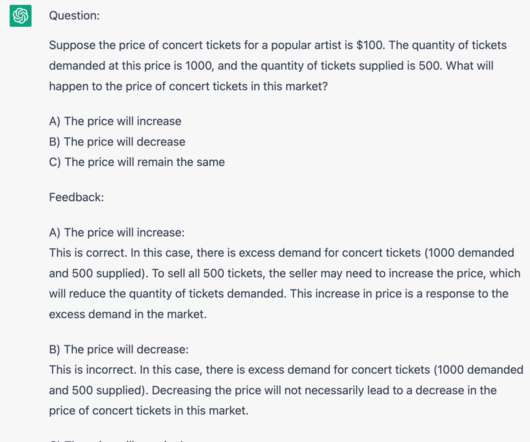AI, Instructional Design, and OER
Iterating Toward Openness
JANUARY 23, 2023
And, because you’ve got to play the hits, let’s look at what their impact will be on OER as well. Current funding for the creation of OER (when it’s available at all) typically focuses on the courses enrolling the largest number of students.





































Let's personalize your content